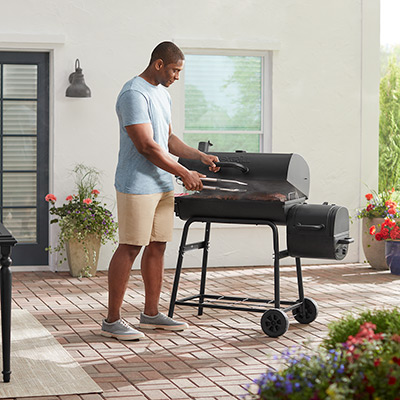Meats to Smoke
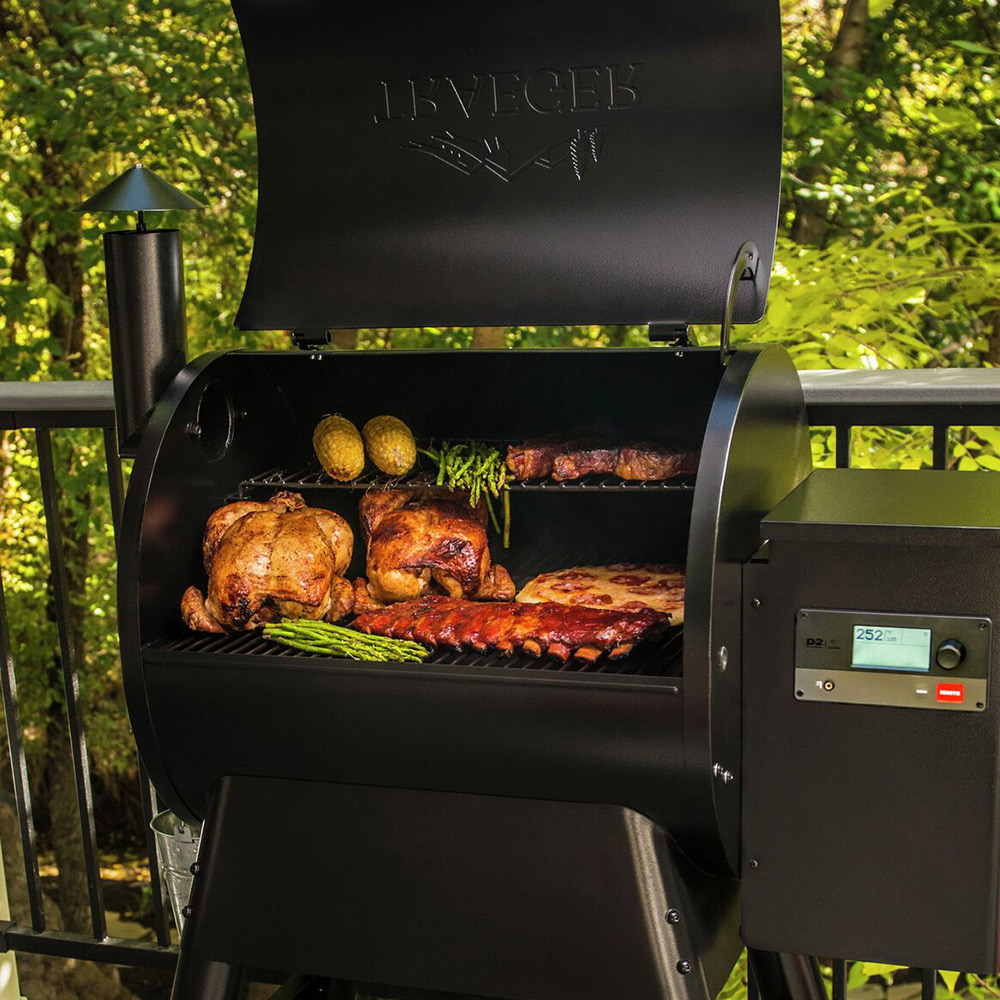
Last updated September 7, 2023
Smokers are made to enhance the flavor of meat by infusing it with smoke. But which meat? Some cuts of meat, particularly ones that are tougher or have a higher fat content, suit the smoking process and are more cost-effective than those considered the finer cuts. This guide reviews popular meats to smoke.
Tip: All cooking times below are estimates. The time can vary based on the type of smoker, size of the meat, smoking temperature and other factors.
Difficulty:
Beginner
Duration:
2-4 hours
Table of Contents
Beef Brisket
Pork Shoulder
Pork and Beef Ribs
Hot Dogs and Sausage
Poultry
Best Woods for Smoking Meats
Beef Brisket
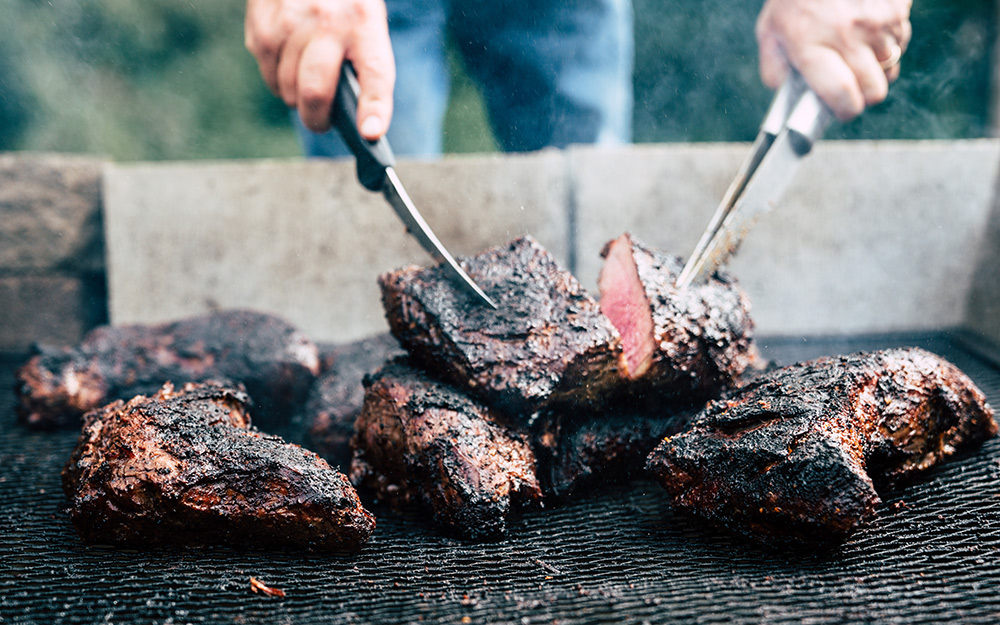
- One of the most popular meats to smoke and a mainstay of Texas-style barbecue is beef brisket. It's normally cut from the breast or lower chest and usually sold boneless. Cuts tend to be tough. Look for tender brisket that’s well marbled and has a fatty layer, which will keep the meat moist.
- Smoking brisket can be time-consuming. It can take 10-14 hours depending on the weight of the meat. Beef brisket should be coooked to an internal temperature of 205 degrees.
- Apply a dry rub before smoking.
Pork Shoulder
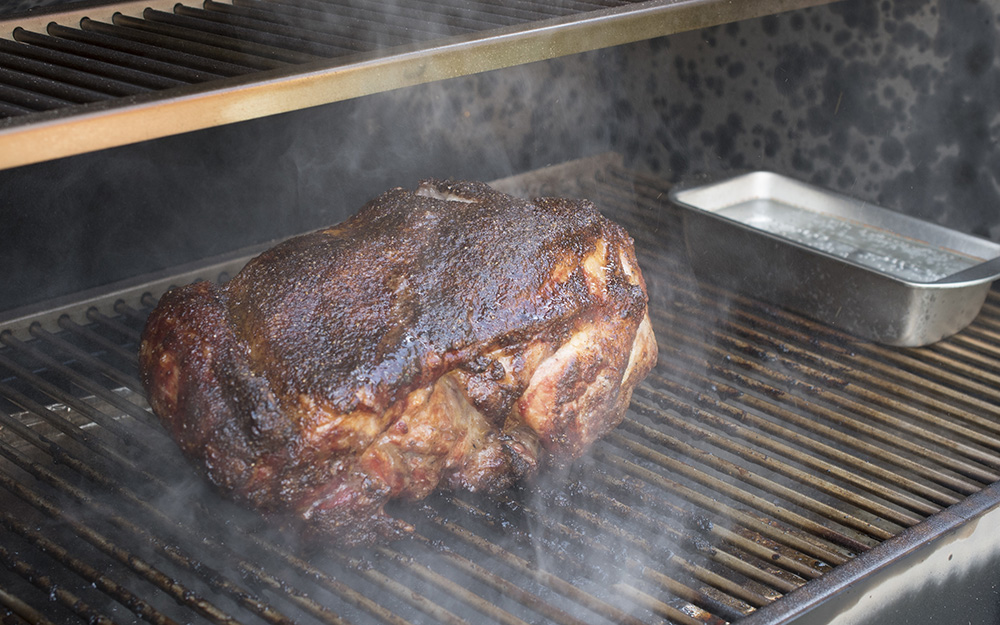
- Popularly known as “Boston butt,” this cut from the upper pork shoulder is the traditional source of barbecued pulled pork. “Pork picnic shoulder” comes from the lower shoulder. It usually includes the elbow joint.
- Pork shoulder has good ratio of lean meat to fat, which suits slow smoking. It often doesn’t need rubs or sauces during the smoking process. The meat works well for sandwiches and tacos.
- Smoking may take 10 hours to get to an internal temperature of 205 degrees.
Pork and Beef Ribs

Ribs are a perennial favorite for smoked meats, particularly pork ribs. The preferred cuts tend to be:
- For pork, baby back ribs are generally the most popular for grilling and smoking. They're cut from where the loin is separated from the spine. Baby back ribs tend to be smaller and cook more quickly than other kinds of ribs.
- Spare ribs are cut from near the belly. St. Louis spare ribs are trimmed in a specific style. Spare ribs may take longer to cook than baby back ribs.
- For beef, baby back ribs tend to have less meat. Chuck ribs and plate ribs offer meatier cuts, with plate ribs often being particularly large. If these ribs aren't available at your local grocery chain, consult a butcher.
Hot Dogs and Sausage
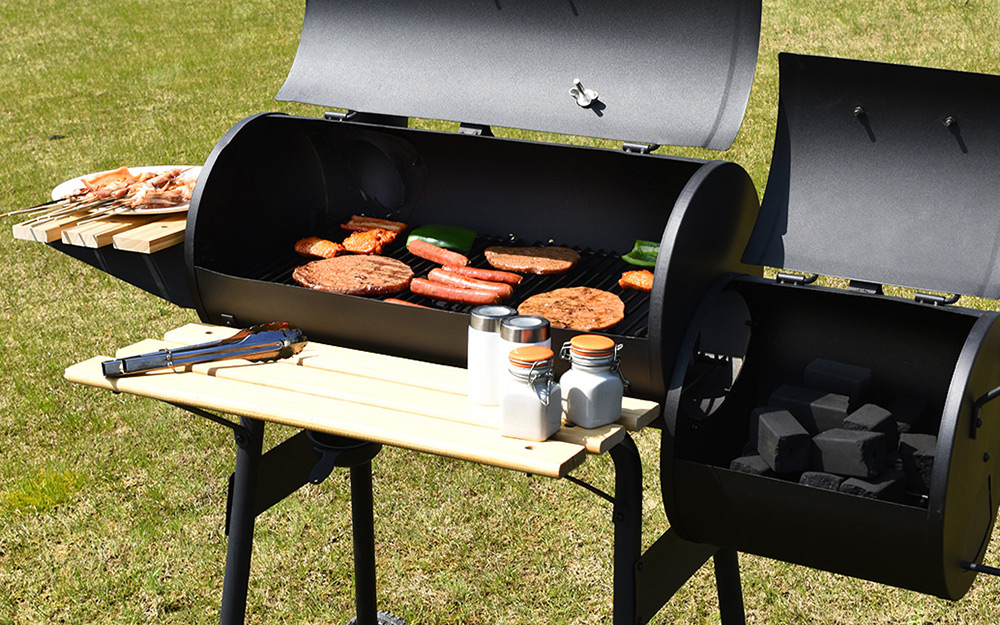
- Hot dogs normally tend to be quick and easy to cook. However, if you’re willing to devote about an hour to smoking them at 225 degrees, you’ll find that smoke can significantly enhance their flavor.
- Many varieties of sausage also benefit from the flavor of fresh smoke. Some recipes can require longer cooking times. Italian sausage may require smoking at 250 degrees for three hours or until it reaches an internal temperature of 165 degrees.
- Some chefs recommend natural casings for hot dogs and sausage.
They absorb the smoky flavor better than edible synthetic casings.
Poultry

Turkey and chicken can serve as delicious alternatives to beef and pork. Brining poultry ensures the meat will remain moist and flavorful.
- Smoked turkey provides the Thanksgiving meal of choice for smoker enthusiasts. Turkey can be prepared on gas or pellet grills, as well as smokers. Be aware of cooking times as you plan your meal. A whole, thawed turkey can take 30 minutes per pound to cook in a smoker’s indirect heat.
- For turkeys and chickens that are more than 15 pounds, consider “spatchocking” the bird. Remove the spine and breastbone so it can lay flat, increasing the surface area that can receive smoke. This method reduces the cooking time of a whole bird.
- For the same reason, chicken halves and quarters can smoke more quickly and easily than whole chickens.
Best Woods for Smoking Meats
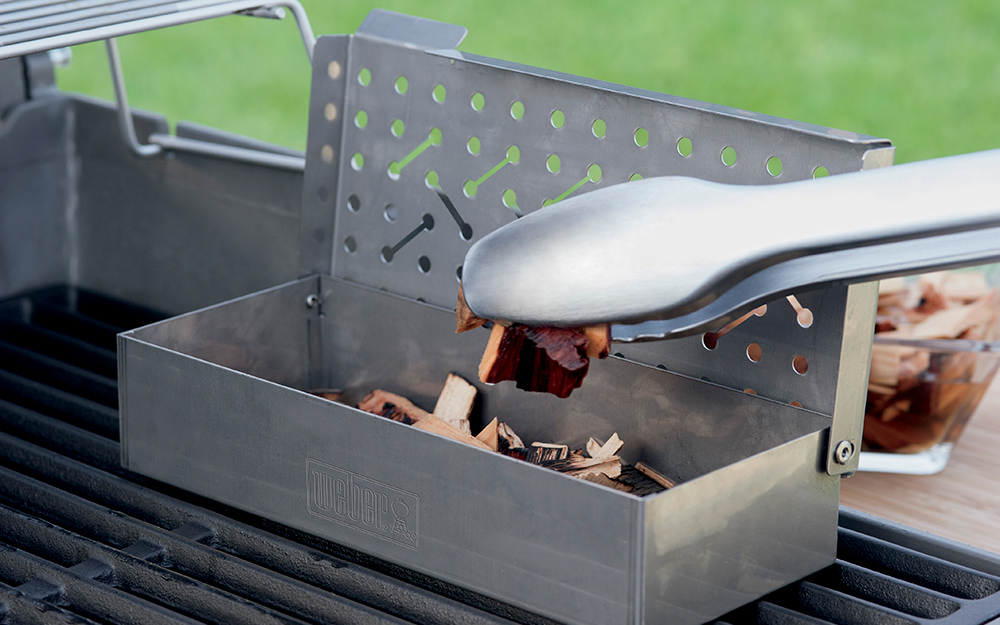
Match wood chips or chunks to the kinds of meat you’re smoking or flavors you want to emphasize.
- Fruitwoods such as apple, cherry and pecan add sweetness to ribs and other cuts.
- Hickory has a stronger flavor. It suits ribs as well as pork shoulder
- Maple has a mild flavor that is a good choice for poultry as well as vegetables
- Mesquite has the strongest flavor and works best for darker meats.
Tips for Smoking Meat
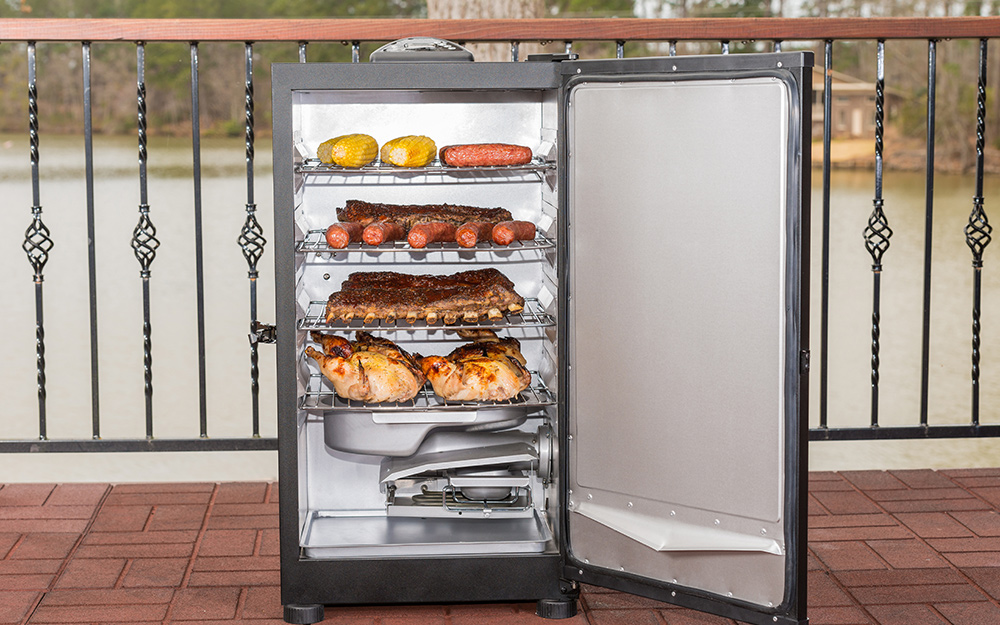
- When smoking for larger groups, vertical smokers and barrel smokers have plenty of capacity.
- Electric smokers can be set to exact temperatures for precision smoking.
- Cook the food on indirect heat, not directly over the heat.
- White smoke tends carry flavorful qualities. If you see black smoke, the meat may be directly over the flames and its juices could be burning, which can make the flavor worse.
- Open the lid of the smoker as infrequently as possible to prevent heat and smoke from escaping. As a saying among smokers goes, “If you’re looking, you’re not cooking.”
- To ensure freshness, buy meat no more than two days before smoking.
Some grill enthusiasts find that smoking can overwhelm the flavors of the finer, leaner, more expensive cuts of meat, such as pork tenderloin, a lean roast and steaks. These meats can be cooked quickly and deliciously on a grill.
If you’re interested in meats to smoke, consider the cheaper, fattier cuts. A smoker can turn tough meat tender. When learning how to smoke meats, practiced on familiar items like baby back ribs. As you develop meat smoking skills, consider trying Cornish hens, goat, carp and other, less common meats to smoke.
When you’re ready to get a meat smoker, The Home Depot delivers online orders when and where you need them.



